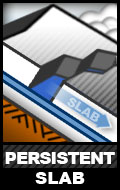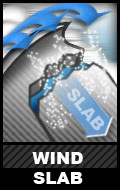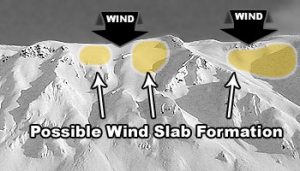Avalanche Danger Forecast
Issued Tuesday, December 29, 2020 at 8pm for the greater Anchorage area Western Chugach Mountains (i.e. Chugach State Park):
Avalanche danger is expected to decrease through this forecast period but remain at moderate.
The chinook windstorm earlier this week ravaged the Chugach State Park snowpack. Anti-tracks and old crusts from over a month ago are visible in many areas. Sastrugi and “slide-for-life” hardpacked snow are widespread.
A fall on steep terrain with slick, hardpacked snow will be as much a hazard this forecast period as avalanches; have a self-arrest method.
Surface conditions are awful for skiers and snowboarders but hikers, bikers, and climbers might still enjoy the variable and generally hardpacked conditions that make their modes of travel more efficient.
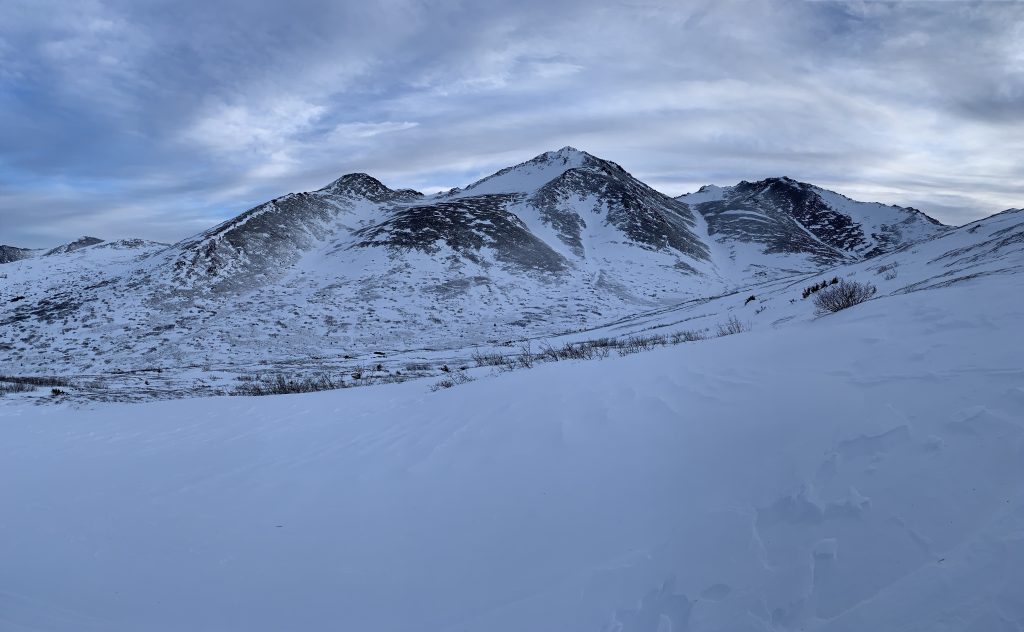
There was little to no new snow that accompanied the Sunday-Monday windstorm in the northern park, while the southern park had insignificant accumulation. While some new snow is expected Wednesday, it will likely only be enough to improve riding conditions where the wind-packed snow is smooth and supportable.
On the bright side, the warm chinook followed by cold temperatures has generally stabilized the snowpack. That said, low probability but potentially high consequence hard slab avalanche problems exist.
Avalanche Problems:
Human triggered persistent slabs up to D2.5 in size are possible on all aspects above 2500′ where the terrain is steeper than 35º. Old, small wind slabs are possible in specific areas (upper elevation leeward terrain) and larger hard slabs in isolated areas.
Diverse and widespread persistent weak layers exist in the snowpack. Faceted snow exists above and below crusts in some areas, sandwiched between wind packed layers in many areas, and a basal weak layer of advanced facets and depth hoar is widespread.
Although the avalanche danger will decrease through this forecast period, and the probability of human triggered avalanches decline, the consequences will remain high if a human does happen to trigger a persistent slab. An old, small wind slab could take one for a long and nasty ride down hardpacked slopes. An isolated and larger persistent slab could be hard to escape and especially traumatic.
Any avalanches triggered this forecast period are expected to be relatively unpredictable hard slabs. Such hard slabs have a tendency to release above and around a human trigger, rather than at the trigger’s feet, which can make escaping such avalanches difficult. In addition, hard slab avalanche debris is more likely to cause trauma than debris from soft snow.
As always, be on the lookout for red flag warnings of avalanche danger. Collapsing (aka “whumphing“) and shooting cracks would be the most likely, although red flags are not generally expected to be indicators of avalanche danger this forecast period. Understanding the snowpack where you intend to travel will require more in-depth analysis in the next few days: digging snowpits, conducting instability tests, and analyzing snowpack stratigraphy (layering).
Terrain management is simply the best way to avoid tricky avalanche problems: don’t expose yourself to terrain capable of producing a dangerous hard slab.
Small (D1 – formed from any loose snow Wednesday), human triggered wind slabs are possible on leeward terrain steeper than 35º above 2500′.
These will be more of a hazard in regard to causing a fall or loss of control, rather than burial (although be mindful of terrains traps), which could prove catastrophic on steep or exposed terrain given the “slide-for-life” hardpacked conditions.
Wind slabs are most likely to exist below corniced areas and along the lee sides of ridges and cross-loaded features like gullies:
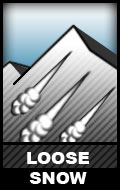 Dry, loose snow avalanches (aka “sluffs) are possible above 3000′ on steep (38º+) terrain across all aspects.
Dry, loose snow avalanches (aka “sluffs) are possible above 3000′ on steep (38º+) terrain across all aspects.
As with the fresh wind slabs, while these sluffs will be very small (D1 – only consisting of minimal new snow from Wednesday), they do have the potential to cause a fall or loss of control.
Don’t let a small loose snow avalanche catch you off guard.
Before traveling on or under terrain that has the potential to avalanche think about the consequences, and have a plan (to escape the avalanche, for re-grouping, and rescue).
Keep in mind that short days with a lot of darkness this time of year increase the difficulty of mountain travel and the consequences of an accident.
Click the hyperlinks and icons to learn more.


